What is Next for Palestinian Popular Resistance in Gaza? Speaking to Journalist Wafaa Aludaini

Palestinian journalist Wafaa Aludaini with a Palestinian protester who was shot in the eye by Israeli forces during the Great March of Return in Gaza. (Photo: Supplied)
By Ramzy Baroud & Romana Rubeo
Wafaa Aludaini is a witness to many of Gaza’s recent tragedies and also never-ending resistance. She experienced the violent Israeli occupation, the subsequent blockade on the impoverished Strip, and several wars that resulted in the death and wounding of tens of thousands of Palestinians.
But none of Israel’s wars impacted Aludaini’s life as much as the 2014 onslaught which Israel dubbed ‘Operation Protective Edge.’
Of the nearly 18,000 houses destroyed, two homes, one belonging to Wafaa’s family and the other to her in-laws, were also destroyed by Israel’s bombs.
Gaza’s infrastructure, which was already dilapidated as a result of previous wars and a protracted siege, took a massive beating during the 51-day Israeli bombardment.
The most irreplaceable of all of this tragic loss is human life, as 2,251 Palestinians were killed and over 11,000 wounded, many maimed for life.
War and siege, however, only strengthened Wafaa’s resolve as she became more involved in covering news from Gaza, hoping to reveal long-hidden truths and defy mainstream media narratives and popular stereotypes.
During the ‘Great March of Return’, a popular movement that began on March 30, 2018, Wafaa joined the protesters, reporting on a daily basis on the killing and wounding of unarmed youth who flocked to the fence that separates besieged Gaza from Israel, to demand their freedom and basic human rights.
Enraged by the refugees’ daily chants of ‘End the siege’, ‘Free Palestine’, and their adamant insistence on their ‘Right of Return’ to their original villages in Palestine, which were ethnically cleansed during Israel’s violent birth in 1948, Israeli snipers opened fire. In the first two years of the March, over 300 Palestinians were reportedly killed, and thousands wounded.
Aludaini was there during the entire ordeal, reporting on the dead and the wounded, consoling bereaved families, and also taking part in an historic moment when all of Gaza rose and united behind a single chant of freedom.
Wafaa Aludaini is a witness to many of Gaza’s recent tragedies and never-ending resistance. She experienced the violent Israeli occupation, and the subsequent blockade on the impoverished Strip, starting in 2006. None of the destructive wars that followed the siege impacted her as much as the war of 2014. That war, dubbed by Israel as Operation Protective Edge, destroyed the homes of Wafaa’s parents and parents-in-law as well. Much of Gaza’s infrastructures were also destroyed – thousands of homes, hundreds of factories, many schools, hospitals and houses of worship. The Israeli war has also killed over 2,200 Palestinians and wounded thousands more.War and siege, however, only strengthened Wafaa’s resolve as she became more involved in covering the Gaza news, hoping to reveal long-hidden truths and defy mainstream media perceptions and stereotypes. During the Great March of Return, a popular movement that began on March 30, 2018, Wafaa joined the protesters, reporting on a daily basis on the killing and wounding of unarmed youth who flocked to the fence, separating besieged Gaza from Israel, to demand their basic human rights.
Posted by The Palestine Chronicle on Wednesday, May 27, 2020
Aludaini was not a typical journalist chasing after a story at the fence, as she was both the story and the storyteller.
“I am a journalist, but I am also a refugee. My parents were expelled from their village in Palestine, which is now in Israel,” she said.
“Being a journalist in Gaza is not easy, because every single day, you are subjected to (the possibility) of being killed, injured, or arrested by the Israeli occupation forces. In fact, many journalists were murdered by Israeli fire this way.”
On why she chose journalism as a career although she studied English literature at a local Gaza University, Aludaini said that the more she understood mainstream media’s reporting on Palestine, the more frustrated she felt by the unfair depiction of Palestine and the Palestinian struggle.
“Journalists who are (advancing) mainstream media (narratives on Palestine) are, in a way, helping the Israeli occupation in killing more innocent people in Palestine, in particular, in the Gaza Strip. (They) are strengthening the people (Israelis) who expelled us in 1948, encouraging them to violate international law,” Aludaini said.
“So I am asking them to come here, to Palestine, to see for themselves, to see the Apartheid wall, to see the checkpoints, to see what is happening in Israeli jails. Only after they see it with their own eyes, can they tell the truth, because journalists should tell the truth and stand for humanity, regardless of religion and regardless of anything else.”
In a similar tone, Aludaini challenged “defenders of the Israeli occupation” to come to Palestine and to “listen to the people who had their children killed; to those who got expelled from their homes. In every home in Palestine, there is a story of misery, but you will never find (these stories) in mainstream media.”
Regarding the Great March of Return, Aludaini said that the March was “a popular protest where the people of Gaza collectively gathered at the separation fence between Gaza and Israel,” to exhibit various forms of resistance that focused mostly on cultural resistance.
Protesters carried out various forms of “traditional activities, like dancing dabka, singing old songs, cooking Palestinian dishes,” Aludaini said, noting that the most touching of these scenes were those of “elderly Palestinians holding the keys of their homes from which they were forcibly expelled in 1948 during the Nakba,” or the Great Catastrophe.
“This kind of popular resistance is not new for Palestinians (as they) have always used all their means to fight for their rights, to fight (against Israeli military) occupation, like the weekly protests (at the Gaza fence), or (the symbolic acts of) stone-throwing. Even when Gazans resort to armed resistance, people never stop displaying popular (forms) of resistance as well.”
But is this the end of the March of Return?
Aludaini said that the March is not over, however, the strategy will be reformulated to minimize the number of casualties.
“After almost three years of the protests, the High Committee of the Great March of Return decided to change the approach of the protests. From now on, the marches are only going to be held on national occasions instead of being held on a weekly basis because Israel uses lethal force against peaceful and unarmed protesters.”
According to Aludaini, the Gaza Ministry of Health, which is already overwhelmed by the lack of hospital equipment, electricity, and clean water, can no longer handle the pressures of daily deaths and injuries.
Aludaini herself spent many hours in Gaza’s hospitals, interviewing and comforting the wounded. She told us of a Gazan mother of four who participated in the March every Friday without fail. “One day, she was shot in the leg, and it was hard for her to walk. But the following Friday, she returned to the fence. When I asked her why is she back despite her injury, she told me: ‘I will never allow the Israelis to steal my land. This is my land; these are my rights and I will come back (to defend them) again and again.’”
For Aludaini, it is the resilience of these seemingly ordinary people that inspires her and gives her hope.
Another story is of a 19-year-old girl who implored her parents repeatedly to join the protests. When they finally relented, the young girl was shot in the eye by an Israeli sniper. Aludaini and her comrades rushed to the hospital to show support for the protester who lost her eye, only to find her in high spirits, stronger and more determined than ever.
“She told us that as soon as she leaves the hospital, she plans to go back to the fence.”
Aludaini challenges “Israeli propaganda” that claims that its wars and ongoing violence in Gaza are motivated by self-defense. If that is the case, “why is Israel targeting the West Bank which is also subjected to annexation and apartheid?” she asks.
“(Currently) There is no armed resistance (in the West Bank), but (the Israeli occupation army) still kills people every single day.”
Aludaini, who is frustrated by the lack of emphasis on media studies in Gazan universities, is determined to continue with her work as a journalist and as an activist because when the media fails at exposing Israeli crimes in Gaza, it is the likes of Wafa Aludaini who make all the difference.
– Ramzy Baroud is a journalist and the Editor of The Palestine Chronicle. He is the author of five books. His latest is “These Chains Will Be Broken: Palestinian Stories of Struggle and Defiance in Israeli Prisons” (Clarity Press, Atlanta). Dr. Baroud is a Non-resident Senior Research Fellow at the Center for Islam and Global Affairs (CIGA), Istanbul Zaim University (IZU). His website is www.ramzybaroud.net
– Romana Rubeo is an Italian writer and the managing editor of The Palestine Chronicle. Her articles appeared in many online newspapers and academic journals. She holds a Master’s Degree in Foreign Languages and Literature, and specializes in audio-visual and journalism translation.



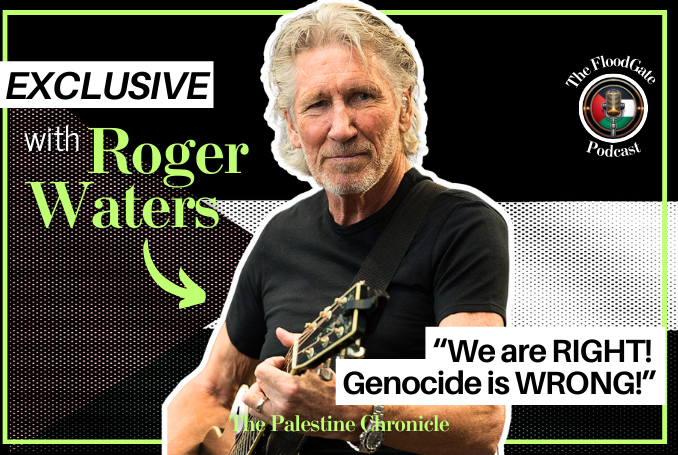

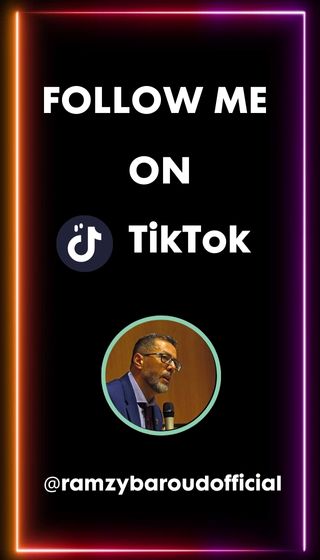












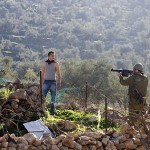



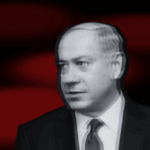

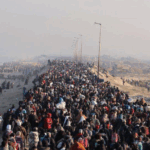

















0 Comments